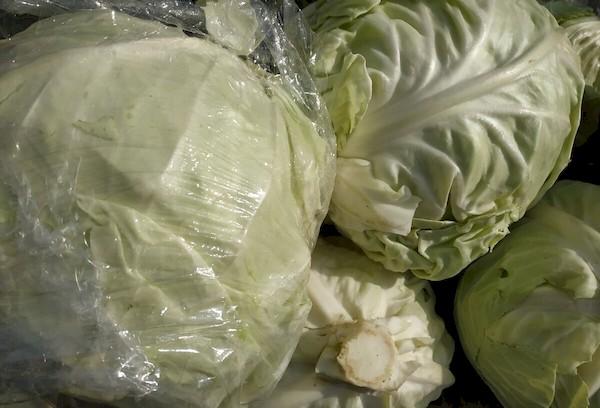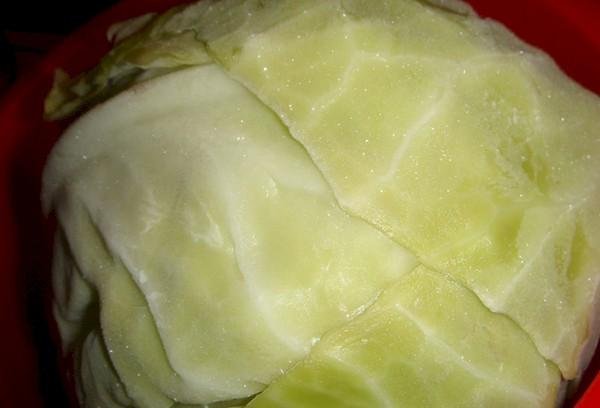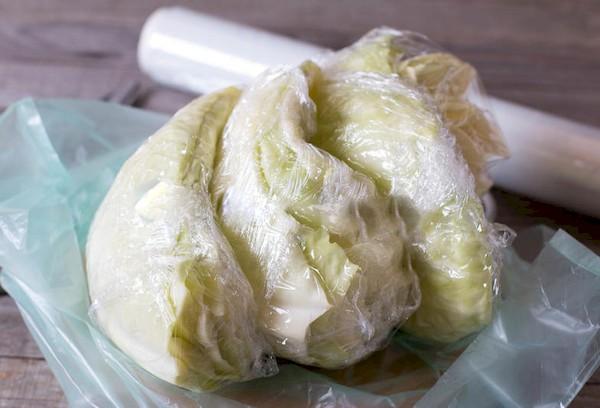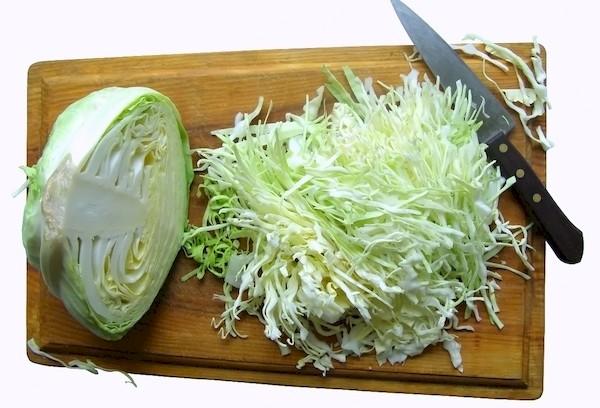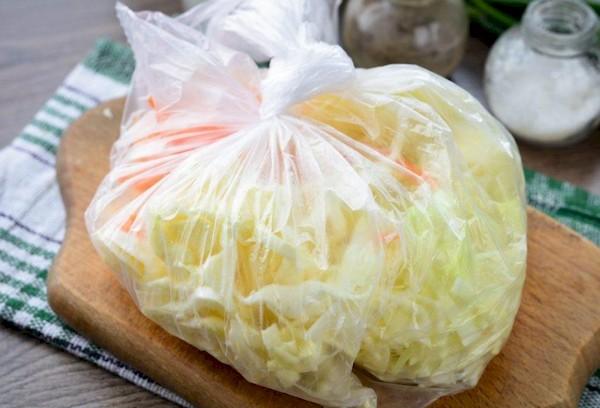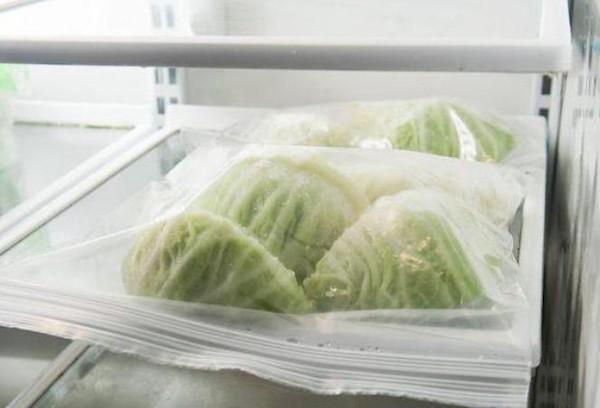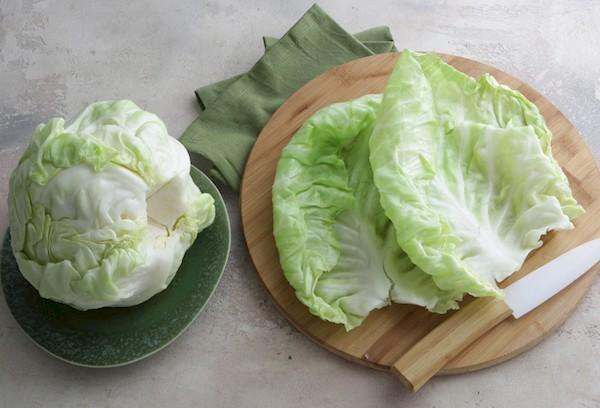Is it possible to freeze white cabbage for storage - features of storage whole, leaves, shredded
Content:
Almost every housewife does winter preparations, filling the freezer with bags of berries and herbs. But is it possible to freeze white cabbage? For many, the question remains open. Meanwhile, the answer to it will be in the affirmative. The vegetable tolerates freezing well and is stored in this form for a long time, if everything was done according to the rules.
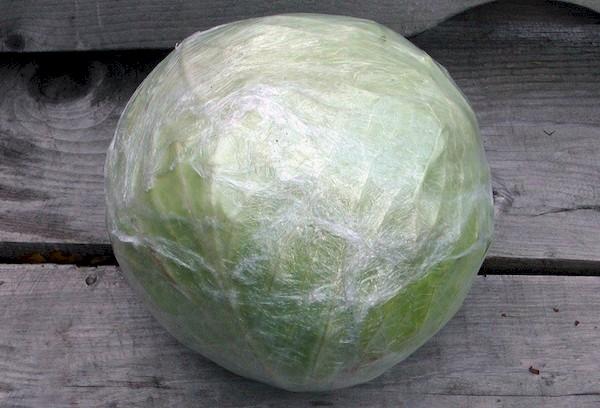
Shelf life of white cabbage
The shelf life of fresh white cabbage depends on its varietal characteristics. It is known that:
- Early ripening varieties last the least; after 1-3 months the heads of cabbage begin to deteriorate;
- mid-season varieties can be stored for 4-5 months;
- The shelf life of late cabbage is 6-8 months.
However, the safety of a vegetable is influenced not only by its belonging to one or another variety. Much depends on storage conditions. Heads of cabbage lie best at temperatures close to zero. If this regime cannot be maintained, cabbage can be fermented. At temperatures up to +4° C, the workpiece will not deteriorate for 7-8 months.In warmer environments, shelf life is reduced to 1-3 months.
The difficulty in storing cabbage lies precisely in creating and maintaining certain conditions. In this sense, freezing vegetables wins. In the freezer, the temperature is maintained automatically and remains stable throughout the entire storage period. Under such conditions, white cabbage can be stored for 12 months or until the next harvest. The method is suitable for fresh and fermented products.
Storage conditions
It is best to keep fresh cabbage in the cellar, where the temperature is maintained at a level of -1° C to +1.5° C, and air humidity is 90-95%. Those who do not have a cellar have to somehow solve the problem of storing vegetables. For example, cabbage can be fermented and kept in a relatively warm basement, refrigerator or on a glassed-in balcony.
Those with a large freezer can make room for white cabbage. Modern household refrigerators allow the use of freezing modes from -18° C and below. This temperature promotes deep freezing of the product, which stops the processes of drying out, decay and rotting.
After thawing, the vegetable will not lose any of its taste and beneficial properties, except that the amount of vitamin C will become slightly less. However, the consistency of the leaves will suffer, they will become soft and will not crunch. This will somewhat narrow the scope of application of the workpiece.
Freezing Tips
You can freeze vegetables in different ways. Some people store whole heads of cabbage in the freezer, while others prefer to freeze shredded cabbage. In the second case, space in the freezer is used more economically.
Whole heads of cabbage
Before the freezing process, the forks should be prepared.They are washed in cold water, then the top leaves are torn off. Cling film works well as packaging. It fits tightly and prevents the product from airing and drying out. Each head of cabbage is wrapped in several layers of film and placed in the freezer. If the functionality of the refrigerator allows it, then you need to turn on the “super freezing” mode in which the compressor runs without shutting down. In this case, the freezing process will proceed more evenly. After 3-4 hours, the compressor operation is transferred to its previous mode.
Individual leaves
This method is ideal if you plan to use cabbage for cabbage rolls in the future. This technique has an advantage. Caterpillars and slugs often hide between cabbage leaves. By disassembling the forks, you can at the same time detect and remove pests, because if you don’t notice them and chop the cabbage, the taste of the dish will be ruined.
The leaves are cut off with a knife near the stalk, carefully removed one by one, lightly boiled, cooled and allowed to drain. This is followed by the pre-freezing stage. The leaves are laid out on a tray and frozen for 40-60 minutes. In the future, for ease of storage, they are folded in a stack, put into a bag and sent back to the freezer, where they will remain until used.
Shredded cabbage
It is convenient to freeze fresh cabbage in shredded form. The result is a semi-finished product, ready to be added to a dish. Cuttings take up less space in the freezer during storage. You can chop the vegetable with a knife or using a special grater. The strips can have any length and width, it all depends on the tastes of the housewife.
The peeled and washed head of cabbage is dried with a paper towel, the stalk is removed and cut into pieces.Then the chopped cabbage is placed into portioned bags or packaged in plastic containers with a lid. The packaging volume must be calculated for use at a time.
If the cabbage tastes bitter, you can lightly blanch it in boiling water (no longer than a minute). Then wait until the excess water drains and place the slices on a paper towel. After 10-15 minutes, the dried cabbage will be ready to freeze.
Sauerkraut
You can also freeze sauerkraut for the winter if you have nowhere to store it. The product can be stored in winter not only in the freezer, but also on an open balcony. Before storing, the workpiece is laid out in jars, containers, and bags. The container must be hermetically sealed. Portions should be made so that the entire volume can be used at one time. Re-freezing of the product is not allowed.
How to properly defrost white cabbage
To prepare most dishes, pre-defrosting the cabbage is not required. For example, if you need to prepare soup or vegetable stew, the preparation is removed from the container and placed in a dish. By the way, since the vegetable becomes softer after freezing, its cooking time is reduced. Add the cuttings towards the end of the cooking process.
If you need to defrost cabbage leaves for cabbage rolls, remove them from the freezer 6-8 hours before cooking and place them on the refrigerator shelf. Here the vegetable will thaw in a gentle way, gradually.
Do not use warm or hot water or a microwave oven for defrosting. Heat exposure will lead to the complete loss of cabbage beneficial properties and loss of appearance. The cabbage leaves will spread, and the cutting will begin to resemble porridge.This vegetable is too delicate to be exposed to contrasting temperatures.
What can you cook from frozen cabbage?
Frozen white cabbage is used in the same way as fresh cabbage. The only thing for which the vegetable becomes unsuitable is preparing salads, because the consistency of the product changes after freezing, and the cabbage ceases to be crispy.
But in cabbage soup and borscht there will be no noticeable difference between fresh and frozen vegetables. Add the slices to the pan 10 minutes before the end of cooking (can be done at the same time as the potatoes). If you are preparing a vegetable stew, you can also add the preparation there without even defrosting it.
Whole heads of cabbage are usually used to make cabbage rolls. Individual leaves are used for the same purpose. The cooking process is significantly accelerated. After all, the leaves will not need to be blanched, and cabbage rolls from frozen cabbage will take less time to stew.
Pros and cons of this harvesting method
Storing cabbage frozen in winter has its advantages. The advantages of this harvesting method include:
- preservation of beneficial properties with minimal losses;
- ease of use as a semi-finished product;
- long shelf life;
- can be used without defrosting.
Sliced cabbage can be frozen in combination with other vegetables - potatoes, carrots, zucchini, tomatoes. In this case, vegetable stew can be prepared in literally 15-20 minutes. Disadvantages - the crispy consistency is lost, the appearance changes, cannot be used for salads, storing whole heads of cabbage requires a lot of space in the freezer.
If for some reason you cannot store cabbage fresh, you can freeze it.In the freezer, the vegetable retains its beneficial properties for up to a year. This preparation is always at hand; it is used for preparing cabbage soup, borscht, and other hot dishes. You can freeze not only fresh, but also sauerkraut. Vegetables cannot be re-frozen, nor can they be subjected to heat for the purpose of thawing. The most convenient way is to chop the cabbage and arrange it in portions. Harvesting whole heads of cabbage and leaves is suitable exclusively for preparing cabbage rolls.
